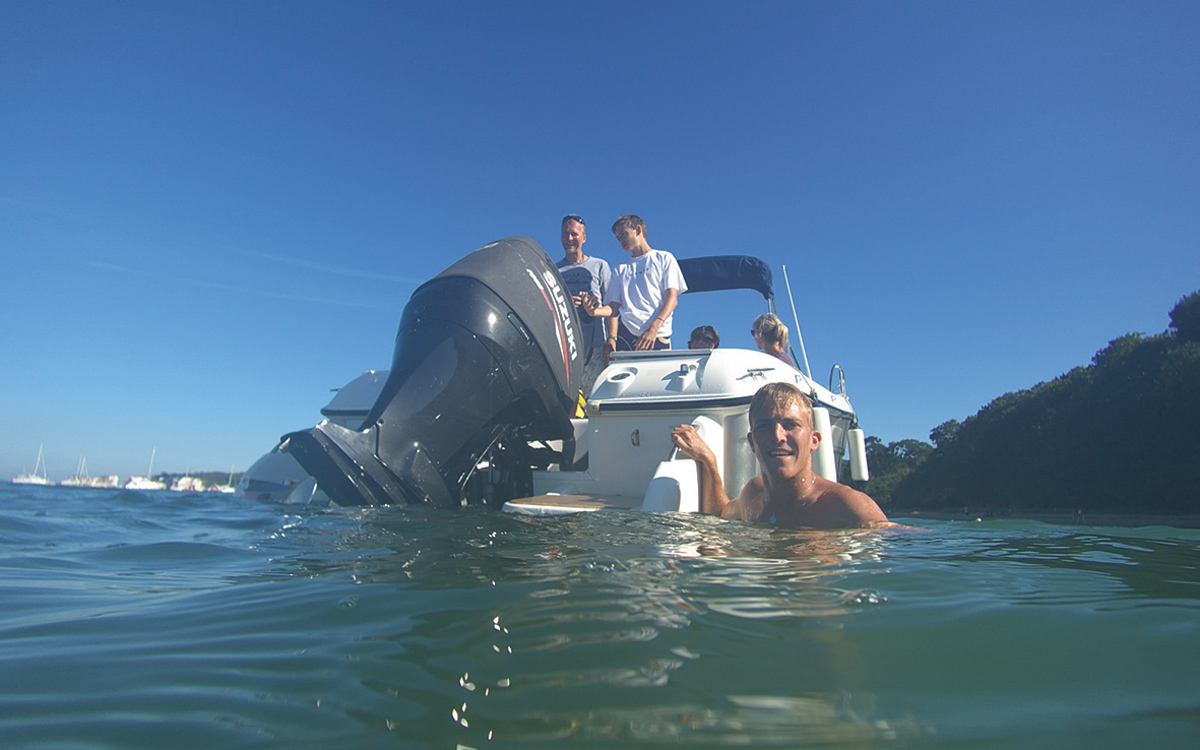Aerial drones have become a popular way for owners to capture unique photos and videos of their boats but could PowerVision’s latest marine drone be an even better option?
If it’s true that “he who dies with the most toys wins” then surely the PowerDolphin would propel you right to the front of the queue. As boys’ toys go, it ticks all the key boxes: fast, tick; cool, tick; expensive, tick; pointless, tick.
OK, maybe that last one is a bit harsh but despite the manufacturer’s best efforts to sell it as everything from a safety aid (apparently it can drag a lifejacket to a casualty) to a fishing tool (you can tow a line and drop bait), it’s hard to see any boat owners using it for anything other than whizzing around the bay taking the occasional video and photograph.
To all intents and purposes the PowerDolphin is a waterborne drone that scoots around on the surface of the sea with a camera in the nose cone that can point up or down to capture footage above or below the water. It’s an impressive-looking bit of kit that comes in the kind of expensive looking box that Apple would be proud of.
Article continues below…

Toy of the month: The first underwater drone with a robotic grabbing arm

Best gifts for boaters: 15 present ideas for the person who has it all
It also packs some pretty advanced tech including a waterproof wide-angle 12 megapixel camera that can shoot 4K video, mounted on an articulated arm that can swing through 220°. The drone itself is designed to float, although it can briefly dive underwater before its buoyancy gets the better of it.
A powerful 64Wh lithium ion battery drives a pair of caged propellers, giving you 20 minutes of ‘flying’ time at its maximum speed of eight knots or 2.5 hours in displacement-only ‘underwater’ mode.
The remote controller has its own in-built rechargeable battery and a mount for holding your smartphone that links wirelessly to the PowerDolphin’s camera via the PowerVision app so you can see what you’re filming in real time as well as recording it on a Micro SD card mounted in the drone itself.

It’s a bit of a fiddle to set up and get everything connected (hence my scepticism about its usefulness as a safety aid) but the flashing LEDs on the PowerDolphin’s ‘wings’ change colour to show you when it’s good to go.
Even then a built-in sensor stops the propellers turning until it’s in the water – sensible from a safety point of view but rather disconcerting having to launch it without being able to test that it’s actually working.
If eight knots doesn’t sound terribly exciting on paper, it certainly doesn’t feel that way when out on the water. The small scale of the PowerDolphin seems to exaggerate its speed as it zips around the bay sounding like a demented wasp.

An above water photo taken by the PowerDolphin of Hugo’s boat
Like any remote-control vehicle, it takes a bit of practice getting used to the steering and throttle sensitivity and I certainly wouldn’t want to risk it in a crowded bay. It weighs a couple of kilos and at eight knots it carries a fair bit of momentum, as I found out when it bounced off my own boat’s hull during an ill-judged fly-by.
The auto-return feature also needs using with care as it doesn’t take account of obstacles in its path such as wooden mooring posts – oops again!
While a waterborne camera sounds like a fun idea, the reality is that unless the sea is incredibly flat, any footage you shoot tends to be pretty jerky. The underwater shooting mode has more potential, especially if you boat in tropical waters. Cruising slowly over a shallow coral reef streaming live footage to guests on board the mothership would be pretty cool. The best I could manage was a brief glimpse of the sea bed off the beach in Sandbanks.

A shot of the seabed off Sandbanks taken by the PowerDolphin
In reality the PowerDolphin seems to me more like a glorified remote-control boat than a useful aid to photography or boat safety, which may make the price a little hard to swallow for all but the most committed toy collectors.
For the rest of us, one of PowerVision’s aerial drones might be a better way to capture memorable photos and video of boats.
Value: 2/5
MBY rating: 3/5
RRP: £695










